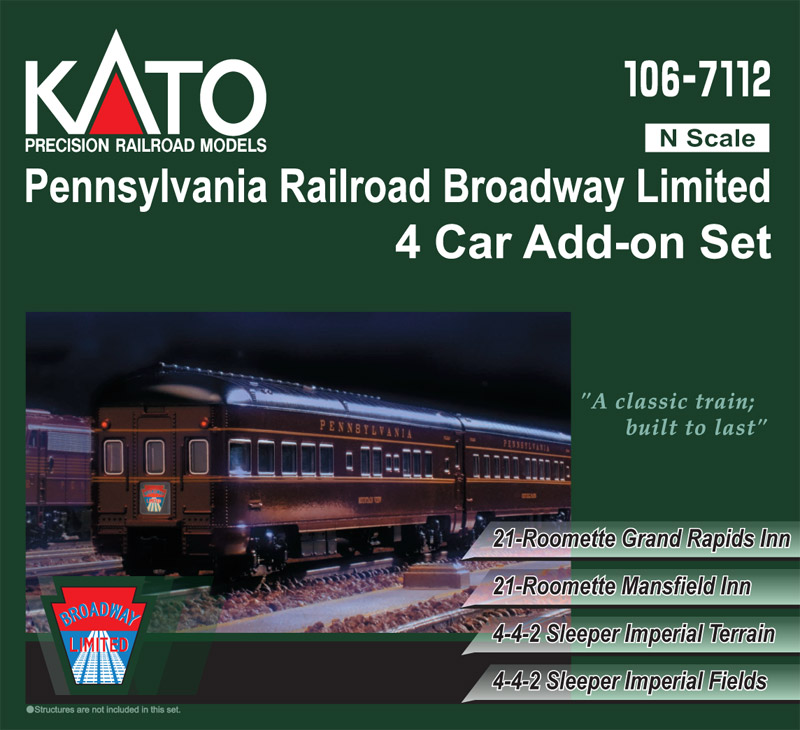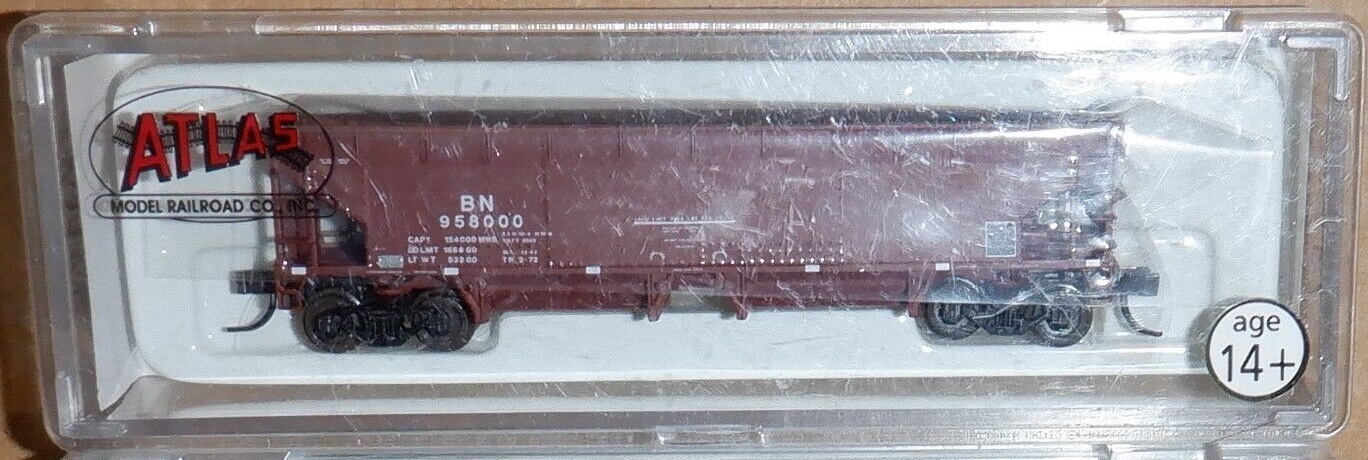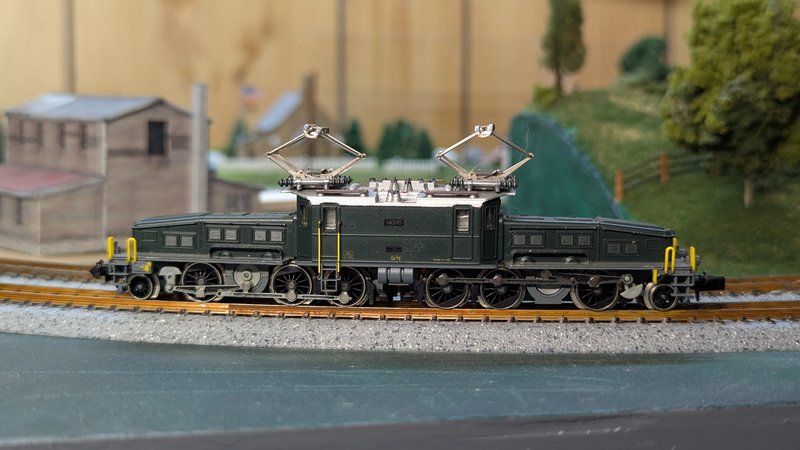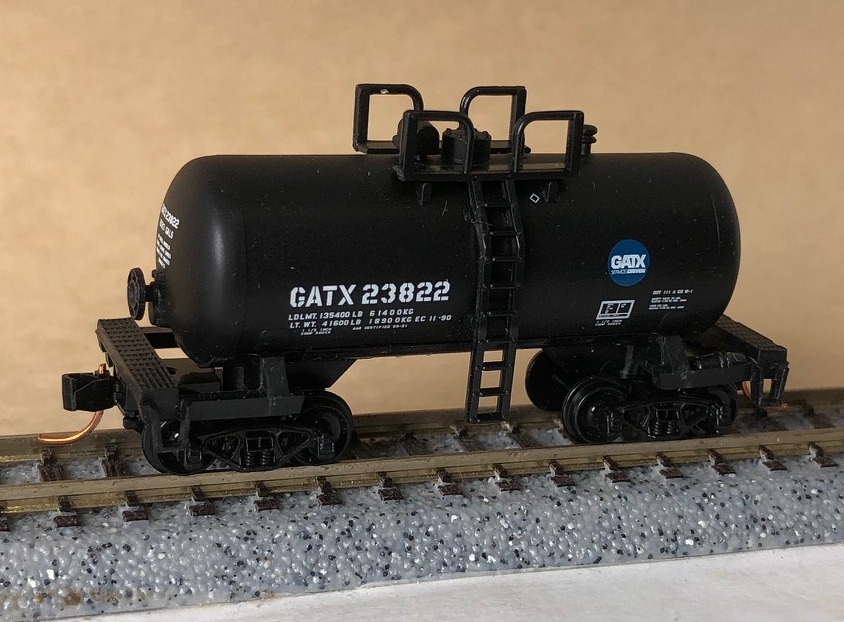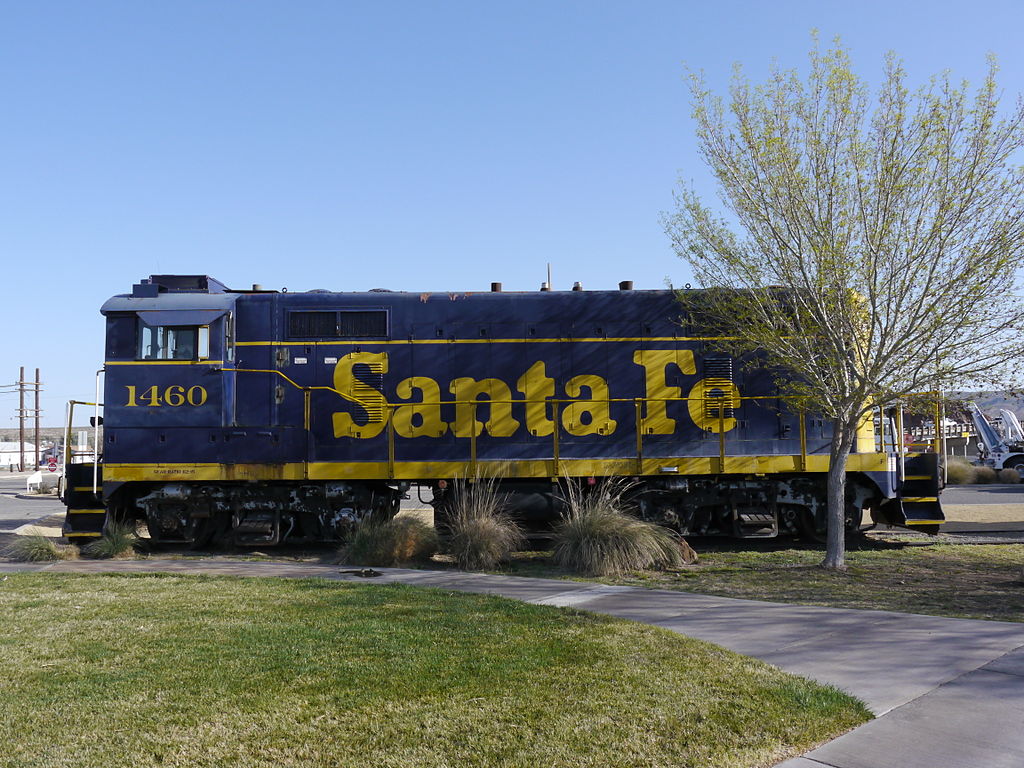Prototype History: The Baldwin VO-1000 was a diesel-electric locomotive (switcher) built by Baldwin Locomotive Works between January, 1939 and December, 1946. The 236,260–242,200 lb (107,170–109,860 kg) units were powered by a normally aspirated eight-cylinder diesel engine rated at 1,000 horsepower (746 kW), and rode on a pair of two-axle trucks in a B-B wheel arrangement. These were either the AAR Type-A switcher trucks, or the Batz truck originally developed by the Atchison, Topeka and Santa Fe Railway as a leading truck for steam locomotives. 548 examples of this model were built for American railroads, including examples for the Army and Navy.
Between June and August, 1945 Baldwin supplied 30 Co-Co road locomotives with 8-cylinder VO engines for export to the Soviet Union as their Дб20 (Db20) class.
There are at least eight intact examples of the VO-1000 that are known to survive today, most of which are owned by museums or historical societies. However, a VO-1000m is owned by the Northwestern Pacific Railroad, a local freight carrier based out of Schellville, California.
From Wikipedia
Between June and August, 1945 Baldwin supplied 30 Co-Co road locomotives with 8-cylinder VO engines for export to the Soviet Union as their Дб20 (Db20) class.
There are at least eight intact examples of the VO-1000 that are known to survive today, most of which are owned by museums or historical societies. However, a VO-1000m is owned by the Northwestern Pacific Railroad, a local freight carrier based out of Schellville, California.
From Wikipedia
Road Name History: The City of Los Angeles and the Harbor Area experienced unparalleled population growth in the early 20th century. City leaders recognized the Port's growth opportunities and created the Board of Harbor Commissioners on December 9, 1907, thus marking the official founding of the Port of Los Angeles. The cities of San Pedro and Wilmington were annexed to the City of Los Angeles on August 28, 1909, making the Port of Los Angeles an official department of the City of Los Angeles.
The Port of Los Angeles has America’s most extensive and modern network of on-dock and near-dock rail services connecting the U.S. imports and exports to international markets. About 35% of intermodal containers utilize the Port’s rail network, which includes one near-dock railyard and five on-dock railyards that serve the Port's seven container terminals. The use of on-dock rail is growing annually.
The Port’s world-class rail infrastructure consists of more than 65 miles of on-dock track for building and sorting double-stack trains that speed imports to markets nationwide and U.S. products to the Port for delivery to consumers around the globe. The average train is made up of 30 double-stack cars, eliminating approximately 400 truck trips and related air pollution on each run while optimizing the movement of cargo.
Five modern on-dock rail yards and a sixth yard – a multipurpose staging and storage facility – serve the Port’s full complement of seven marine container terminals. The network operates 24/7 and links to the Alameda Corridor, a dedicated rail expressway that connects the docks to the transcontinental rail system for cargo to flow nonstop between the Port and markets throughout North America.
The Port’s rail network also consists of the near-dock Intermodal Transfer Container Facility (ICTF) and five off-dock mainline rail yards – three operated by Union Pacific Railroad (UP) and two operated by BNSF. The UP East Los Angeles Yard and the BNSF Hobart/Commerce Yard near downtown Los Angeles, approximately 24 miles north of the San Pedro Bay ports, handle the majority of the intermodal cargo.
Over the past 10 years, the Port has invested more than $300 million in railway-roadway grade separations and rail system projects to reduce truck trips and optimize the flow of cargo. The Port and its terminal operators are planning to expend hundreds of millions more on rail system projects over the next 10 years to accommodate expected growth in intermodal rail volumes.
The Port of Los Angeles has America’s most extensive and modern network of on-dock and near-dock rail services connecting the U.S. imports and exports to international markets. About 35% of intermodal containers utilize the Port’s rail network, which includes one near-dock railyard and five on-dock railyards that serve the Port's seven container terminals. The use of on-dock rail is growing annually.
The Port’s world-class rail infrastructure consists of more than 65 miles of on-dock track for building and sorting double-stack trains that speed imports to markets nationwide and U.S. products to the Port for delivery to consumers around the globe. The average train is made up of 30 double-stack cars, eliminating approximately 400 truck trips and related air pollution on each run while optimizing the movement of cargo.
Five modern on-dock rail yards and a sixth yard – a multipurpose staging and storage facility – serve the Port’s full complement of seven marine container terminals. The network operates 24/7 and links to the Alameda Corridor, a dedicated rail expressway that connects the docks to the transcontinental rail system for cargo to flow nonstop between the Port and markets throughout North America.
The Port’s rail network also consists of the near-dock Intermodal Transfer Container Facility (ICTF) and five off-dock mainline rail yards – three operated by Union Pacific Railroad (UP) and two operated by BNSF. The UP East Los Angeles Yard and the BNSF Hobart/Commerce Yard near downtown Los Angeles, approximately 24 miles north of the San Pedro Bay ports, handle the majority of the intermodal cargo.
Over the past 10 years, the Port has invested more than $300 million in railway-roadway grade separations and rail system projects to reduce truck trips and optimize the flow of cargo. The Port and its terminal operators are planning to expend hundreds of millions more on rail system projects over the next 10 years to accommodate expected growth in intermodal rail volumes.
Brand/Importer Information: In 1924 Stephan Schaffan, Sr. founded the Atlas Tool Company in Newark, New Jersey. In 1933 his son, Stephan Schaffan, Jr., came to work for his father at the age of sixteen. Steve Jr. built model airplanes as a hobby and frequented a local hobby shop. Being an enterprising young man, he would often ask the owner if there was anything he could do to earn some extra spending money. Tired of listening to his requests, the hobby-store owner threw some model railroad track parts his way and said, "Here, see if you can improve on this".
In those days, railroad modelers had to assemble and build everything from scratch. Steve Jr. created a "switch kit" which sold so well, that the entire family worked on them in the basement at night, while doing business as usual in the machine shop during the day.
Subsequently, Steve Jr. engineered the stapling of rail to fiber track, along with inventing the first practical rail joiner and pre-assembled turnouts and flexible track. All of these products, and more, helped to popularize model railroading and assisted in the creation of a mass-market hobby. The budding entrepreneur quickly outgrew the limitations of a basement and small garage operation. Realizing they could actually make a living selling track and related products, Steve and his father had the first factory built in Hillside, New Jersey at 413 Florence Avenue in 1947. On September 30, 1949, the Atlas Tool Company was officially incorporated as a New Jersey company.
In 1985, Steve was honored posthumously for his inventions by the Model Railroad Industry Association and was inducted into the Model Railroad Industry Hall of Fame in Baltimore, Maryland. In addition, Steve was nominated and entered into the National Model Railroad Association Pioneers of Model Railroading in 1995.
In the early 1990s, the Atlas Tool Company changed its name to Atlas Model Railroad Company, Inc.
In those days, railroad modelers had to assemble and build everything from scratch. Steve Jr. created a "switch kit" which sold so well, that the entire family worked on them in the basement at night, while doing business as usual in the machine shop during the day.
Subsequently, Steve Jr. engineered the stapling of rail to fiber track, along with inventing the first practical rail joiner and pre-assembled turnouts and flexible track. All of these products, and more, helped to popularize model railroading and assisted in the creation of a mass-market hobby. The budding entrepreneur quickly outgrew the limitations of a basement and small garage operation. Realizing they could actually make a living selling track and related products, Steve and his father had the first factory built in Hillside, New Jersey at 413 Florence Avenue in 1947. On September 30, 1949, the Atlas Tool Company was officially incorporated as a New Jersey company.
In 1985, Steve was honored posthumously for his inventions by the Model Railroad Industry Association and was inducted into the Model Railroad Industry Hall of Fame in Baltimore, Maryland. In addition, Steve was nominated and entered into the National Model Railroad Association Pioneers of Model Railroading in 1995.
In the early 1990s, the Atlas Tool Company changed its name to Atlas Model Railroad Company, Inc.
Item created by: CNW400 on 2024-09-06 23:33:06. Last edited by CNW400 on 2024-09-06 23:45:18
If you see errors or missing data in this entry, please feel free to log in and edit it. Anyone with a Gmail account can log in instantly.
If you see errors or missing data in this entry, please feel free to log in and edit it. Anyone with a Gmail account can log in instantly.






